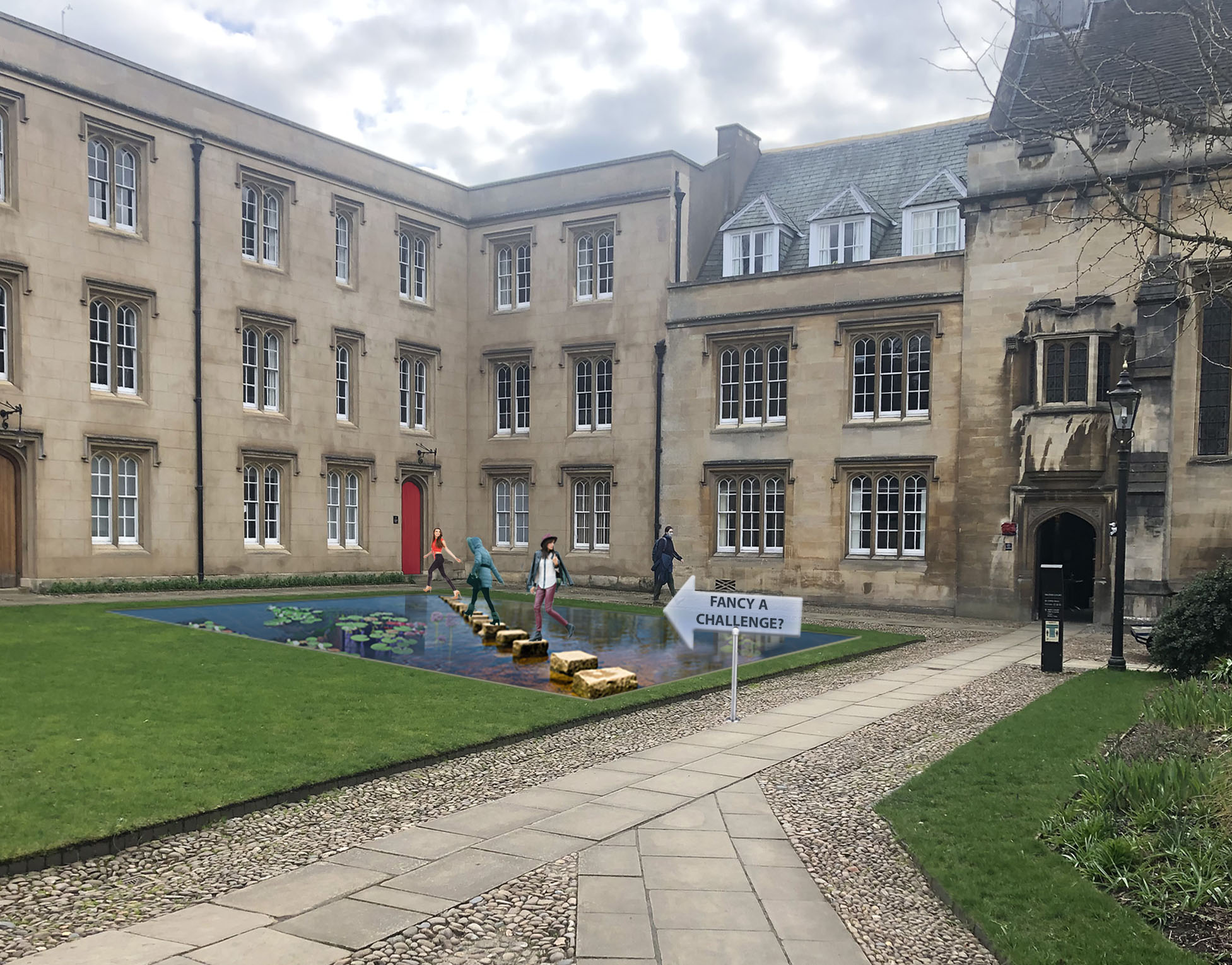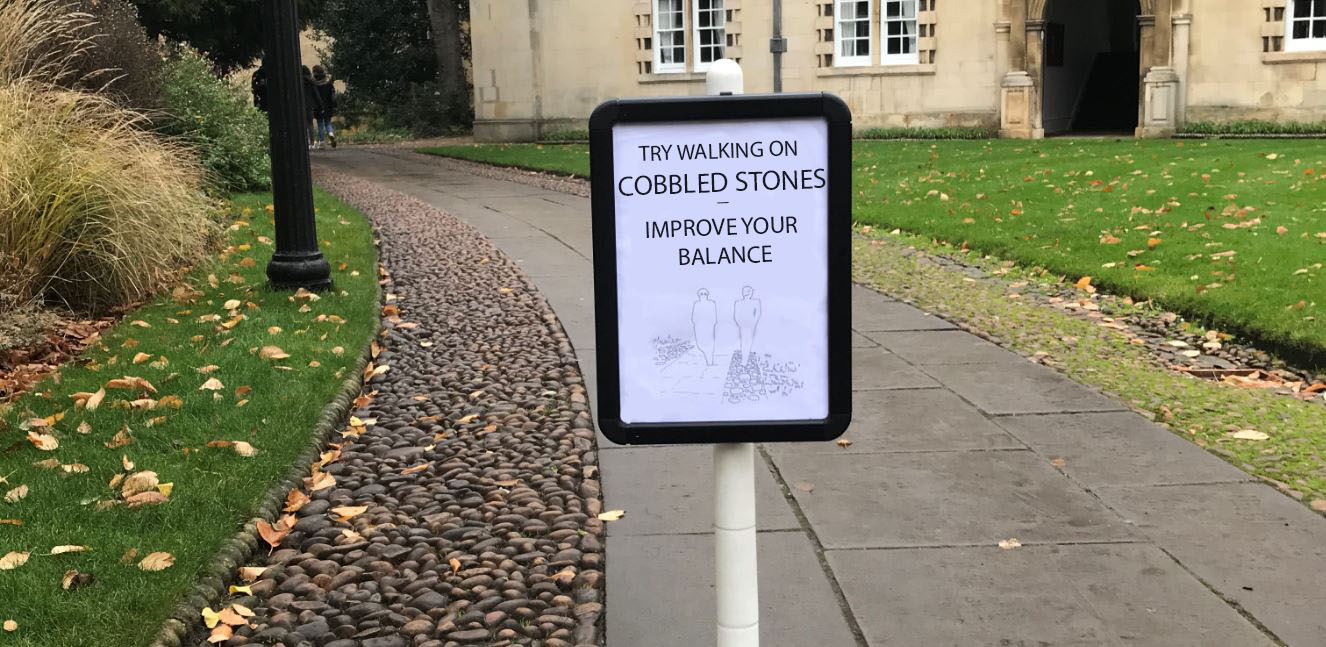A new study shows that using steppingstones can make walking a more effective exercise and significantly improve fitness levels. Christ’s students and staff contributed to an ‘Urban Activism’ project run by Anna Boldina, a PhD student in the Department of Architecture.
Participants took part in exercises in the College gym where they walked first on a flat treadmill as usual and then at the same speed stepping only on ‘steppingstones’ marked with a coloured tape on the treadmill.
Ms Boldina’s additional online socio-psychological study using photoshopped collages, like the one pictured below, has already demonstrated that up to 78% of people say that they would take a more challenging walking route including steppingstones or balancing beams if offered the choice.

The gym-based research provided more data. Ms Boldina said:
“By measuring the cardio and metabolic effect of using steppingstones we were able to test our theoretical findings on members of the general population.”
The data collected compared heart rates over the two activities - walking on the flat treadmill and on 'stepping stones'. Participants also completed a questionnaire about body reactions and the likelihood of them performing similar exercise outside the gym.
The average increase in heart rate due using steppingstones was 17.22% with the activity most effective for 30-60 year olds.
Project participant, Charlotte said:
“I was enthusiastic to take part in Anna's experiment as it sounded like a unique experience and a productive piece of research. Simulating stepping stones on a treadmill is a creative and resourceful method for data collection. I was particularly interested to see a correlation between an increase in heart rate and complexity in the steps.”
Another student, Christoph said “I heard about the project from Anna and was intrigued - I found the experience surprisingly fun and relaxing.”
The majority of participants said that they would consider using steppingstones on their way to work and 100% said that they would use them walking in a park. People are more likely to use these more challenging options if there is a handrail.
The government currently recommends 150 minutes of ‘moderate exercise’ per week. Walking along a pavement is ‘mild exercise’, but walking that includes ‘active landscapes’ increases the heart rate but also helps to improve balance and bone density.

The research is featured in national and international publications including on the BBC and has drawn the interest of UK councils and designers. Ms Boldina said, “We hope that this new evidence can help designers to implement Active Urbanism strategies.”
A. Boldina et al., ‘Active urbanism: heart rate and oxygen consumption comparison when walking on imitation steppingstones versus a plain surface’, Cities and Health (2022)
A Boldina et al., ‘Active Landscape and Choice Architecture: Encouraging the use of challenging city routes for fitness’, Landscape Research (2022)

